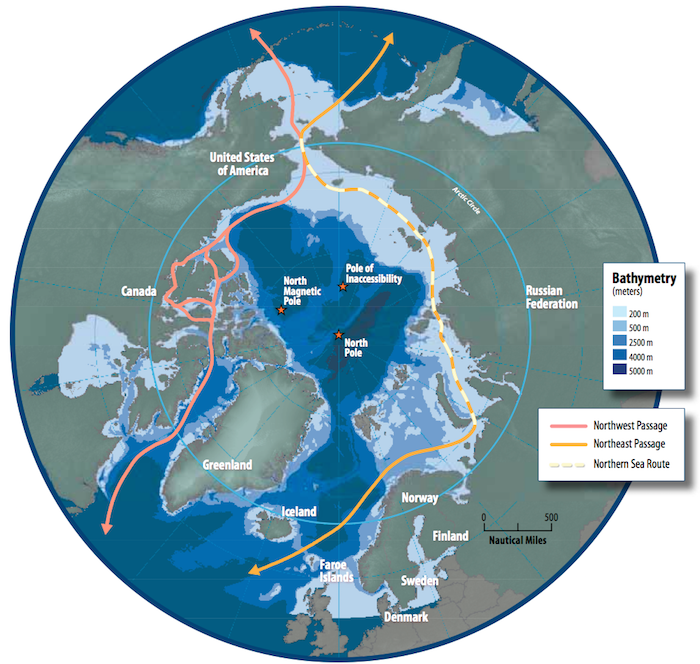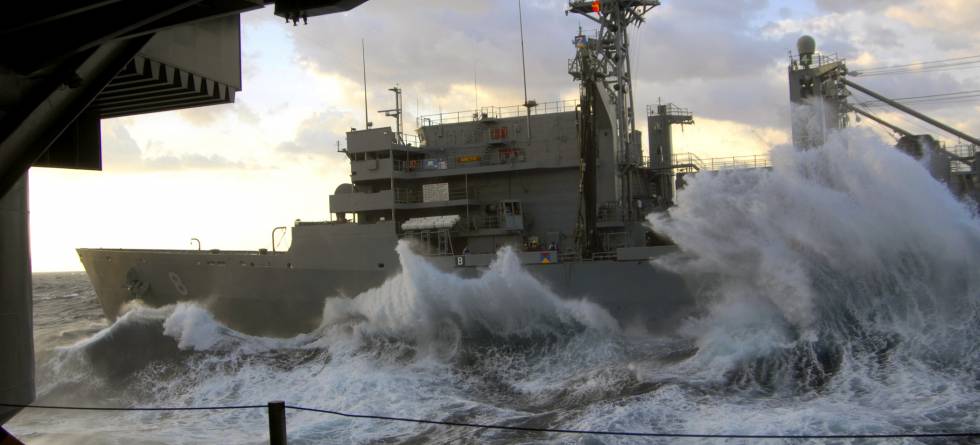By Linling Chen (NERSC), Lingling Suo (NERSC) og Mari Myksvoll (IMR)
Given the dramatic changes in the Arctic sea ice cover during recent decades, there is a growing expectation for a commercially feasible Arctic shipping route connecting the Atlantic and Pacific Oceans to become available. Compared with other Arctic sea routes, navigation along the Northeast Passage (NEP) is relatively easy because of low sea ice extent and open water in the Barents Sea during summer time.
The NEP, encompassing the route along the Norwegian and Russian Arctic coasts, will give us more access to natural resources and will significantly shorten (up to 40%) the travel time between Europe and Asia compared to the Suez Canal. Although the Suez Canal is still the main maritime passage (nearly 18,000 vessels go through Suez every year), shipping companies have already realized the advantages of using the NEP. There were only 4 commercial ships sailed through the NEP in 2010, but this number increased to 71 in 2013, and went a bit down to 53 in 2014. Despite its economic potential, there are many challenges and limitations to the usage of the NEP.

Limited to summer time
First of all, frequent voyages are limited to summer time when we have younger and thinner ice over much of the NEP with ice-free conditions along the coastal areas. Even with suitable ice conditions, free-floating ice in summer will remain a serious threat to navigation. Other challenges:
- The harsh weather conditions and the low predictability of seasonal ice conditions make the navigation more hazardous.
- Remoteness and limited search and rescue capabilities increase the risks to operations in this area.
- Shallow coast waters limit ship size, and ice movements lead to unpredictability of the ships’ arrival time.
- Lack of a dense coastal population and the more expensive ship construction and increased operational costs lessens the value of the NEP as a trading route.
For these reasons, we concluded that it would be too optimistic to use the NEP as an alternative to the Suez Canal in the near future.
Interdiciplinary research
Technological advances and infrastructure investments may reduce the challenges. At the same time, we are expecting future interdisciplinary cooperation among politicians, society, lawyers, economists and climate scientists.
To encourage early career scientists to be active in this cooperation, the Norwegian Ministry of Foreign Affairs initiated a series of multidisciplinary summer schools since 2011. The summer schools have been jointly organized between the Norwegian Scientific Academy for Polar Research (NVP), Nansen Environmental and Remote Sensing Center (NERSC), Nansen Scientific Society and the University Studies in Svalbard (UNIS).
In 2013, there were 30 selected students from 13 countries with different research backgrounds joined the summer school. Three of us are affiliated with Bjerknes Center of Climate Research. We enjoyed the inspiring lectures and the fruitful discussions. Based on the report to the summer school, a paper ’’Commercial Arctic shipping through the Northeast Passage: routes, resources, governance, technology, and infrastructure’’ has been published in Polar Geography (2014). This paper is a good result of the participants’ teamwork, and is also a good start for the future interdisciplinary work on the transport development in the Arctic.
Reference:
Buixadé Farré, Albert; Stephenson, Scott R.; Chen, Linling; Czub, Michael; Dai, Ying; Demchev, Denis; Efimov, Yaroslav; Graczyk, Piotr; Grythe, Henrik; Keil, Kathrin; Kivekäs, Niku; Kumar, Naresh; Liu, Nengye; Matelenok, Igor; Myksvoll, Mari; O'Leary, Derek; Olsen, Julia; Pavithran .A.P., Sachin; Petersen, Edward; Raspotnik, Andreas; Ryzhov, Ivan; Solski, Jan; Suo, Lingling; Troein, Caroline; Valeeva, Vilena; van Rijckevorsel, Jaap; Wighting, Jonathan (October 16, 2014)."Commercial Arctic shipping through the Northeast Passage: Routes, resources, governance, technology, and infrastructure". Polar Geography (Taylor & Francis).doi:10.1080/1088937X.2014.965769

